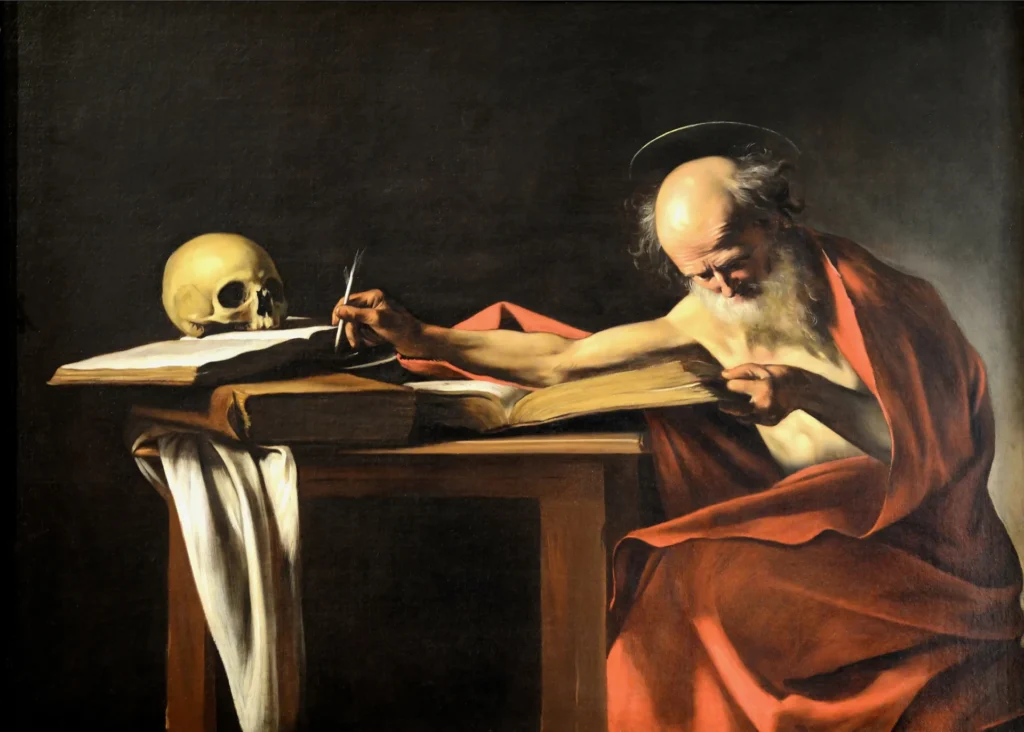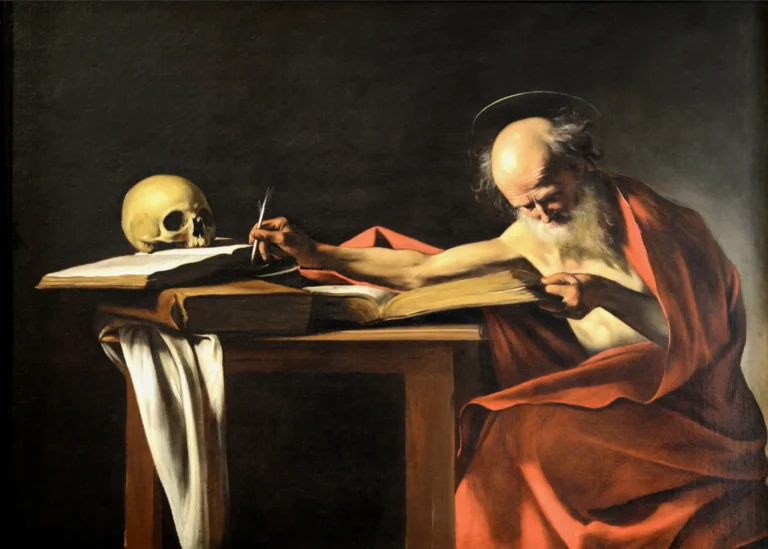Saint Jerome Writing (1610)
Saint Jerome Writing is a striking painting by Caravaggio, crafted during his late Roman period circa 1605-1606. The artwork depicts Saint Jerome, an early Christian scholar, absorbed in his writing, surrounded by an array of books and a skull. This juxtaposition emphasizes the themes of mortality and divine reflection, a prevalent motif in Caravaggio's works. Characterized by his signature chiaroscuro, the painting captures both the physicality of Jerome’s body and the spiritual weight of his scholarly pursuits.
1605 - 1606
About the Artwork
Commissioned by Cardinal Scipione Borghese, Saint Jerome Writing serves as a testament to Caravaggio's exceptional talent and the interplay of art and faith during the Counter-Reformation. The painting reflects contemporary religious fervor and individual contemplation, showcasing Jerome's commitment to scholarly work amidst the reminder of mortality symbolized by the skull. Although attributed to Jusepe de Ribera in the 18th century, the consensus among art historians now favors Caravaggio. Curiously, the painting was executed just before Caravaggio's tumultuous exile to Malta, marking a significant chapter in both his life and career.
Did You Know
Saint Jerome is known for his translation of the Bible into Latin, which is known as the Vulgate. This work greatly influenced Christian theology and became the standard biblical text for centuries.
Caravaggio is renowned for his innovative use of chiaroscuro, a technique that contrasts light and dark to create a dramatic effect, which plays a pivotal role in the emotional depth present in Saint Jerome Writing.
In the painting, the skull symbolizes mortality and serves as a memento mori, encouraging viewers to reflect on the fleeting nature of life and the importance of focusing on eternal truths.










